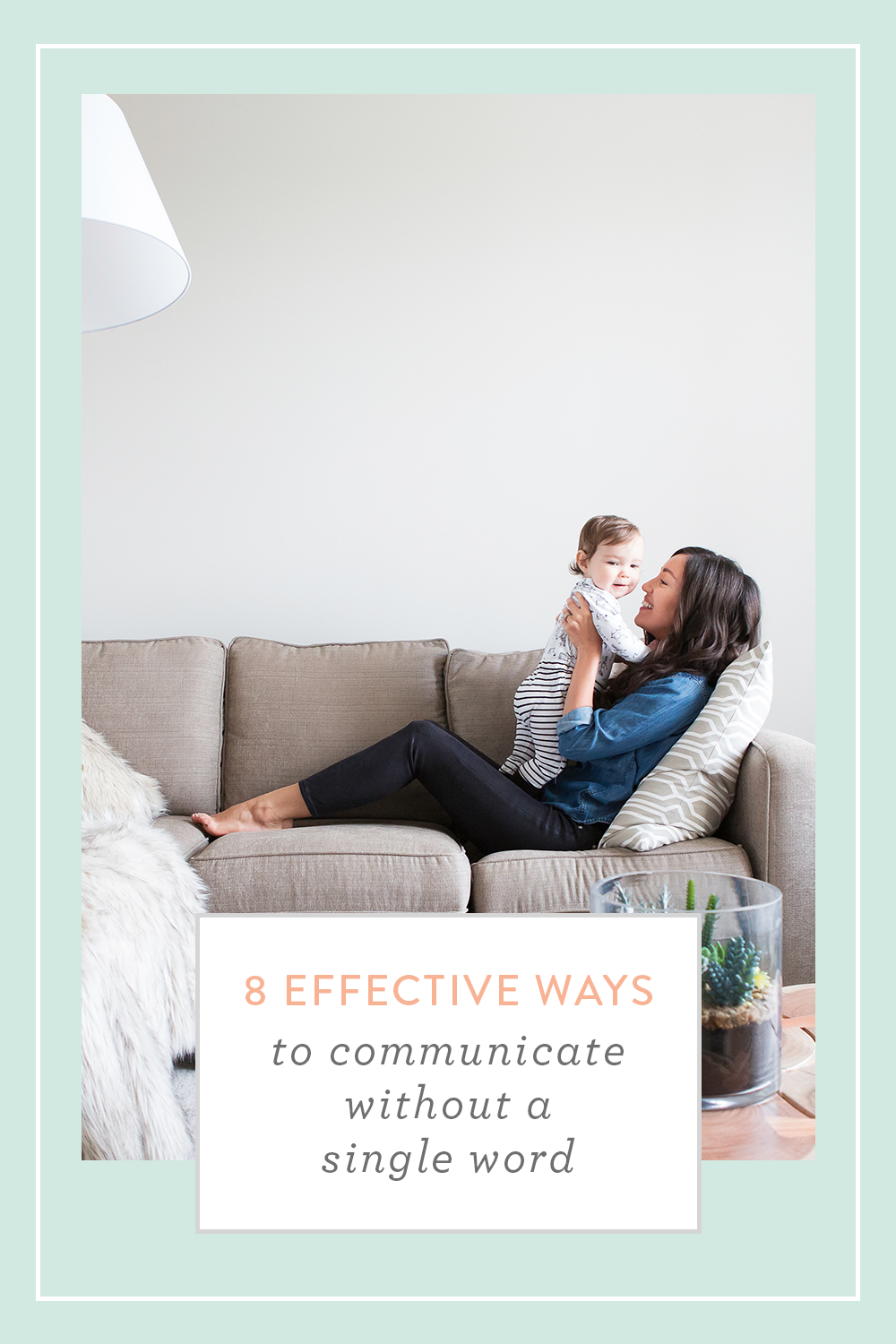The essence of Play Therapy lies in finding a communication style that allows a child to express their inner feelings with a medium they are familiar with. Children feel complex emotions and are aware, on some level, of complicated subjects and themes ranging from loss and loneliness to importance and inferiority. Children often, however, do not yet possess the cognitive faculties to explain these ideas to others verbally. Young people make up for this lack of verbal expression with a heightened awareness of nonverbal communication, making it incredibly important for adults to focus in on what they are saying when they aren’t saying a thing.
1. Eye Contact
One of the most important and overlooked forms of nonverbal communication that can make a profound positive impact on a child is the degree of eye contact an adult makes with them. So often children look up at the tall world around them, with the “important grown-ups” towering above them. By kneeling down and getting on the child’s level, or better yet, below the child’s level and looking up at them, a connection is formed that emphasizes the child’s importance. On the flipside, standing over a child and looking down on them can sometimes be interpreted as imposing, and whether it is intentional or not, a child may automatically feel compelled to be defensive and evasive.
2. Facial Expression
Although this may seem obvious to some, facial expressions can sometimes communicate more to a child than any words coming from an adult’s mouth. Maintaining soft eyes and a relaxed face, versus slitted eyes and a frown, encourage the child to listen and stay connected, even while disciplining. When starting a conversation with a child, they may simply see the angry facial expression on display and immediately go into a “fight or flight” response.
3. Tone of Voice
Going hand-in-hand with facial expression, tone of voice offers much more context to a situation than any words can for a child. Being able to maintain a soft, comforting and calm tone of voice when communicating with a child helps show that they are safe, and that the adult still cares and loves for the child even in a stressful situation.
4. Posture
Posture is something that often flies under the radar for most adults, as many posture habits are ingrained over many years and have become unconscious. To better form connections with a child it is important to analyze these posture habits and explore the way you stand and hold yourself when communicating. By relaxing your shoulders, having open hands and perhaps kneeling towards the child, an adult expresses an openness and calm that is appealing and safe. Many adults have formed habits such as crossing one’s arms, putting hands on hips or leaning forward imposingly towards a child when communicating. This often creates a sense of unease within the child as it unconsciously communicates a stance of being “closed-off.”
5. Gestures
Nonverbal gestures are incredibly important to take into account when communicating with children, just think of how nearly effortless it is or young adults to pick up sign language! By offering hugs, high-fives, and gentle touches on the shoulders or head, adults can create strong and lasting connections. However, aggressive gestures such as wagging a finger, accusatory pointing, or tossing one’s hands up in the air can cause a lasting impact on a child (think of how often children “parrot” these gestures, even at a very young age!)
6. Timing of Response
Perhaps the most overlooked nonverbal communication on this list, the timing of response when communicating with children goes a long way in establishing a child’s perceived level of self-worth and importance. By letting a child finish their entire statements before speaking, or asking relevant clarifying questions, an adult shows they are engaged, connected, and ready to truly listen. Interrupting a child or leaving long distracted pauses before answering communicates to the child that you are not as engaged and therefore less connected.
7. Intensity of Response
Similar to the timing, it’s very important to reflect on how you are going to say the next words to a child. By staying calm and being patient (even in a hectic situation!) an adult can pass on these very skills to the child, regardless of the verbal content. Yelling, crying, and adding unnecessary intensity to a response often drives away a child, severing intended connection.
8. Bodily Movement
Finally, the last tip on effective nonverbal communication with children is to focus on one’s movement patterns, especially when moving towards a child when beginning to communicate. Before beginning a conversation, slowly moving closer to a child in a relaxed manner and bending down towards them creates an enticing environment for a child to become engaged in. Bodily movements such as quickly walking away, stomping, or jerky, anxious moves can create a chaotic and unpredictable environment for a child, and one they may wish to avoid rather than connect with.
As mentioned previously, many nonverbal skills inherent within adults have been learned and set into habit sometimes over the course of decades. Despite this, I hope that this post will encourage adults to self-reflect on how they present themselves non-verbally when communicating with children, and can lead to positive change that will create a more nurturing and connected relationship.

